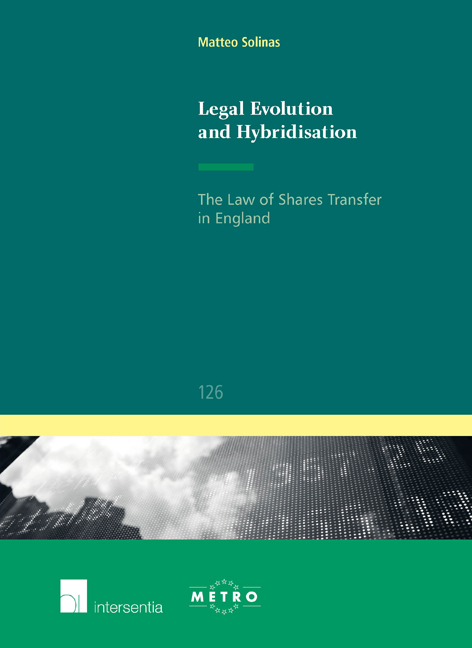Summary
This introductory chapter sketches the themes to be addressed in the book. It first sets out the context and highlights the aims and the structure of the theoretical inquiry on the relationship between comparative law and legal change, the underlying themes of the book. It then outlines how such inquiry operates in the specific analysis of the transfer of (directly and indirectly held) shares in England.
The idea of comparative law as a way of building bridges between legal systems and even cultures is fascinating and has stimulated interesting initiatives for the use of such methodology. One particular debate looks at the relevance of foreign law and foreign legal ideas as a means of shaping national law. The fundamental idea is that legal comparison is a powerful tool to unveil the interaction between different jurisdictions, and to uncover the circumstances and the mechanisms by which law develops. In the wake of the lively discussions on globalisation, convergence among legal systems and on the unification of private law, the exact significance of how legal paradigms are connected and circulate across national frontiers is, however, still largely uncertain. The comparative conundrum, in particular, rests on the appropriateness of describing the movement of law from one country to another by employing the metaphor of ‘legal transplant’.
Broadly put, two approaches have emerged. These are, it would seem, irreconcilable. One school of thought, greatly relying on legal history, maintains that the evolution of law is primarily a function of rules being imported from other legal systems in accordance with the unpredictable directions imposed by domestic lawyers. It follows from this perspective that legal growth is largely autonomous from society. It operates in its own dimension, oft en detached from those of other social institutions. Postmodernist theorists, on the contrary, claim that legal transplants are an imaginative scholarly construction. Reasoning, language and judgement are at large determined by inescapable and incommensurable epistemic, linguistic, cultural and moral frameworks. The development of law mirrors, and is necessarily responsive to, a specific legal culture. It cannot take place through borrowing because rules are culturally situated phenomena and not simply bare prepositional statements. In Chapter 1, this study contends that both perspectives offer elements of truth, but that they also contain flaws in explaining the process of the diffusion of law and the pattern of legal change.
- Type
- Chapter
- Information
- Legal Evolution and Hybridisation , pp. 1 - 4Publisher: IntersentiaPrint publication year: 2014



